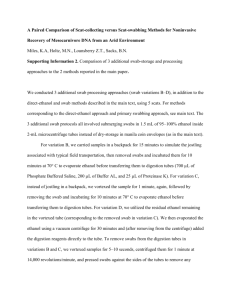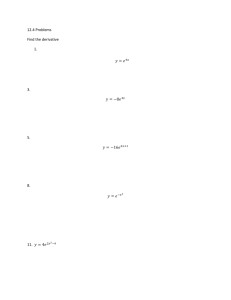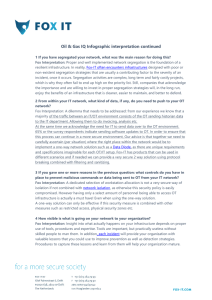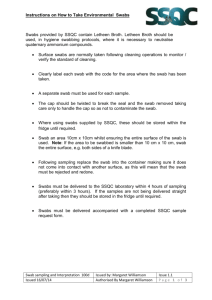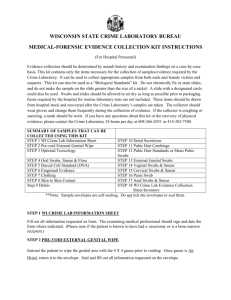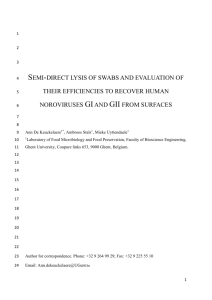wsb600-sup-0001-SuppData-S1
advertisement
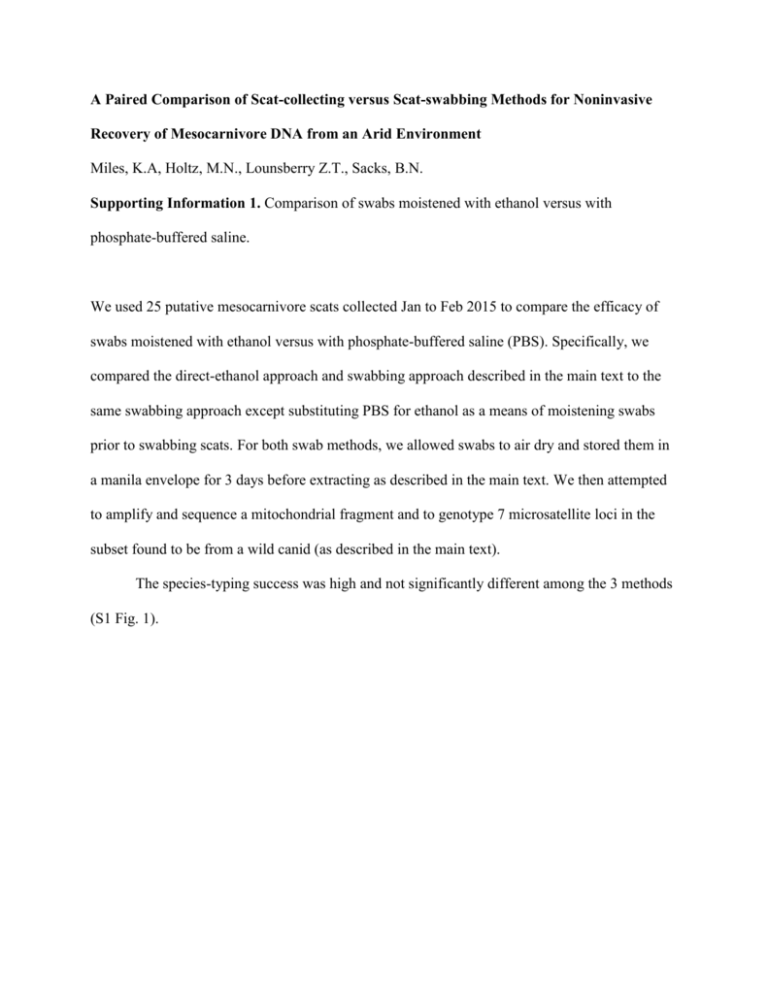
A Paired Comparison of Scat-collecting versus Scat-swabbing Methods for Noninvasive Recovery of Mesocarnivore DNA from an Arid Environment Miles, K.A, Holtz, M.N., Lounsberry Z.T., Sacks, B.N. Supporting Information 1. Comparison of swabs moistened with ethanol versus with phosphate-buffered saline. We used 25 putative mesocarnivore scats collected Jan to Feb 2015 to compare the efficacy of swabs moistened with ethanol versus with phosphate-buffered saline (PBS). Specifically, we compared the direct-ethanol approach and swabbing approach described in the main text to the same swabbing approach except substituting PBS for ethanol as a means of moistening swabs prior to swabbing scats. For both swab methods, we allowed swabs to air dry and stored them in a manila envelope for 3 days before extracting as described in the main text. We then attempted to amplify and sequence a mitochondrial fragment and to genotype 7 microsatellite loci in the subset found to be from a wild canid (as described in the main text). The species-typing success was high and not significantly different among the 3 methods (S1 Fig. 1). Mitochondrial amplification success 1.0 0.8 0.6 0.4 0.2 0.0 Direct-ethanol Swab (ethanol moistened) Method Swab (PBS moistened) S1 Figure 1. Proportions of 25 scat samples successfully species-typed via amplification and sequencing of 354 bp of the mitochondrial cytochrome b gene using 3 methods of scat collection and storage. Error bars indicate 95% confidence intervals corresponding to proportions (see main text for methods). Among the 23 samples found to be from a red fox, gray fox, or coyote, we compared genotyping success. Considering a genotyping attempt successful in ≥6 of the 7 attempted loci amplified indicated significantly higher success from the direct-ethanol extracts than from either of the swab-method extracts (𝛸22 = 12.6, P = 0.002), which did not differ significantly from one another (Fisher’s exact test P = 0.24; S1 Fig. 2). Proportion amplifying >6 loci 1.00 0.90 0.80 0.70 0.60 0.50 0.40 0.30 0.20 0.10 0.00 Direct-ethanol Swab (ethanol moistened) Swab (PBS moistened) Red fox Coyote Method Gray fox S1 Figure 2. Proportions of 23 scat samples successfully genotyped at ≥6 (of 7) microsatellite loci using 3 methods of scat collection and storage. Bars reflect proportions of 3 red fox, 14 coyote, and 6 gray fox scats. Similarly, the direct-method extracts amplified a higher number of loci, on average, for all 3 canid species than did either of the swab-method extracts (S1 Fig. 3; F4,60 = 13.67, P < 0.001; Fisher’s LSD, P < 0.001), which did not differ significantly from one another (Fisher’s LSD, P = 0.61). No. loci (7 total) 6 coyote 5 gray fox 4 red fox 3 2 1 0 Direct EtOH swab Method PBS swab S1 Figure 3. Average (±SE) number of microsatellite loci amplified in 23 canid scats (3 red fox, 14 coyote, and 6 gray fox) using 3 methods of scat collection and storage.
